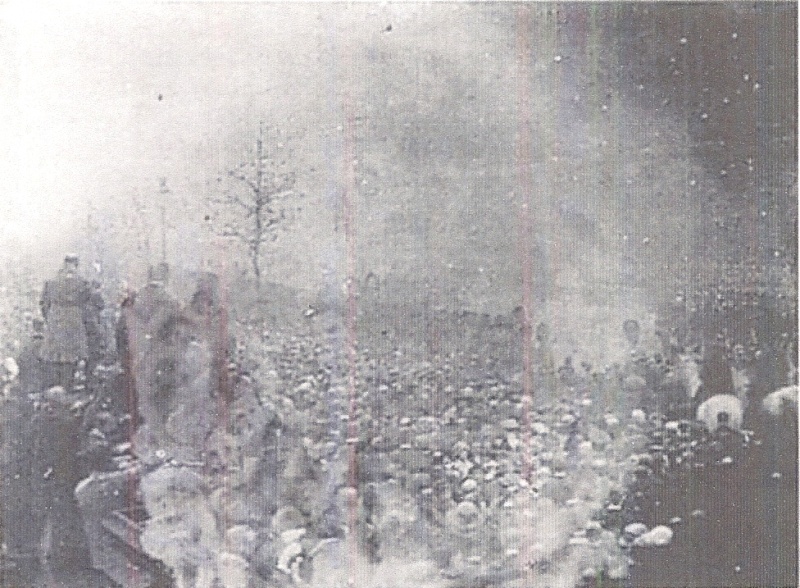As it is Halloween today, I wanted to offer a couple of images that, for a few years now, have been deeply important to my dissertation. Be forewarned: they are odd and perhaps alarming, but nonetheless vital documents in the history of the British Great War experience. They are spirit photographs, taken by the medium Ada Emma Deane. Deane set up her camera and took the photographs during the two minutes of silence observed on Armistice Day in London. When the photographs came to light, they created a sensation, for they appeared to depict ghostly fallen soldiers hovering over the crowd standing solemnly by the Whitehall Cenotaph. The images elicited both gratitude and outrage among the British populace. Although her work instigated invasive press inquiries and exposés, Deane never disclosed her methods of creating the images and maintained that they were real. She continued to take spirit photos on Armistice Day throughout the 1920s and into the 1930s. To this day, she remains a figure of controversy in British photography, spirituality, and cultural history.
| Ada Emma Deane. Armistice Day Spirit Photograph, 1922. Barlow Collection, British Library. |
| Ada Emma Deane. Armistice Day Spirit Photograph, 1923. Barlow Collection, British Library. |
While we in academic circles don't typically wade too deep into the world of the occult, or at least talk about our private excursions therein, I have made it my project to bring the work of Ada Emma Deane, Sir Oliver Lodge, and Sir Arthur Conan Doyle, among others, into dialog with their modernist counterparts. My wish is not to dull the edges of the Spiritualists' very provocative images and texts by dragging them through the sands of scholarly criticism. Rather, I believe that in order to understand any work of literature or art, we must plunge ourselves fully and enthusiastically--might I even add, recklessly?--into the world in which that work first lived. And, lucky for me, given my proclivity for wholehearted intellectual plunges, the world of Great War-era Britain happens to include the amazing Spiritualists.
Today I place Ada Deane's incredible spirit photos of the Armistice Day observances in the little virtual scrapbook that is "Ghosts of 1914." There is much more to say about these haunting and haunted images and related artifacts from literature and art (and I will do so). Deane's photos did not and do not affect everyone in the same way--what some perceived as a welcome and moving message from the dead was for others a scandalous and offensive trick. Here, I'd simply like to grant them space and recognition as artifacts of the immensely multifaceted experiences of the British populace during and after the war, and as examples of the equally multitudinous artistic response to the war.
© Fiona Robinson
----
Sources and further reading:
Deane images at "Spiritualism Link":
"The Mediumship of Ada Emma Deane"
Doyle, Sir Arthur Conan. The Case for Spirit Photography. London: Hutchinson, 1920.
Jolly, Martyn. Faces of the Living Dead: The Belief in Spirit Photography. London: Mark Batty, 2006.
Kaplan, Louis. The Strange Case of William Mumler, Spirit Photographer. U of MN Press: 2008.
Wikipedia: "Armistice Day":
http://en.wikipedia.org/wiki/Armistice_Day
Wikipedia: "The Cenotaph, Whitehall":
http://en.wikipedia.org/wiki/Armistice_Day
Wikipedia: "The Cenotaph, Whitehall":
Wikipedia: "Oliver Lodge":
Wikipedia: "Arthur Conan Doyle: Spiritualism":
http://en.wikipedia.org/wiki/Arthur_Conan_Doyle#Spiritualism














